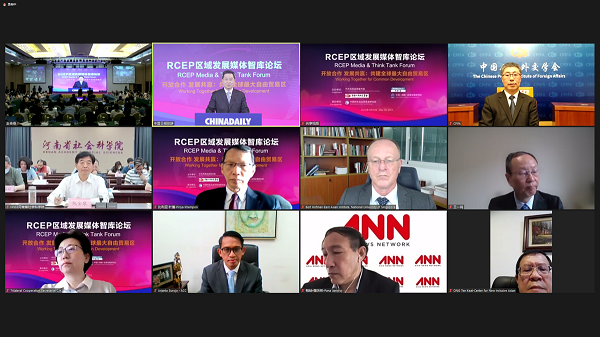
Under the theme of "Working together for common development," this year's RCEP Media & Think Tank Forum was held on May 29. [Photo by Liu Yuan/chinadaily.com.cn]
Signed by 15 Asia-Pacific economies in November 2020, the RCEP agreement has created the world's largest free trade bloc covering one-third of the global population and domestic gross product. It has come into force in 13 members so far.
According to Wang Yiming, vice-chairman of the China Center for International Economic Exchanges, the agreement is a successful example of open regionalism, as it unprecedentedly groups economies with different development levels and industrial structures into an integrated economic community.
The RCEP will become a stabilizing anchor and accelerator for advancing economic globalization, he said.
Aiming to facilitate and liberalize trade and investment, the RCEP eliminates more than 90 percent of tariffs on goods traded in the region over a period of 20 years. It also allows products to enjoy tariff reduction or elimination if they have 40 percent or more of their value added within the region.
That comes in comparison with the recently launched "Indo-Pacific Economic Framework", in which 11 RCEP members have joined.
The US-led IPEF, with all rules and standards dictated unliterally by the United States, has no content on the much-anticipated tariff reduction and market access to the US, according to Ong Tee Keat, chairman of the Center for New Inclusive Asia in Malaysia.
The initiative's high overlapping membership with RCEP is no coincidence. It focuses on countering China's growing geopolitical influence in the region, according to him.
He said the RCEP needs no duplication in its role to promote regional economic integration.